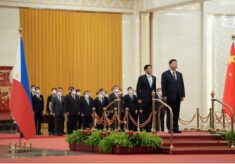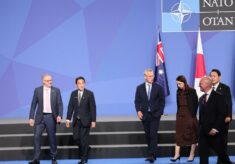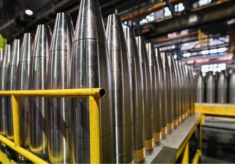President Trump’s decision to open a dialogue with the “arch-enemy” Kim Jong-un was a good intuition and a bold political move. But, as in the case of his meetings with Putin and his attempt to renegotiate the JCPOA with Iran, his performance as “super negotiator” has not produced tangible results. During their first meeting in Singapore the two leaders did agree upon a statement indicating their shared objective of a “lasting and robust peace regime in the Korean Peninsula”, Kim’s “unwavering commitment to complete denuclearization” and Trump’s commitment to provide the DPRK with undefined security guarantees. Their second meeting in Hanoi however, was a fiasco: the two leaders were unable to reach any common language, not even a reaffirmation of the understanding previously reached in Singapore. Evidently, their teams had not made – or wanted to make – the necessary preparatory homework. As a result the DPRK found itself unprepared for a US proposed deal based on a single grand comprehensive bargain.
These results are disappointing especially if compared to the parallel inter-Korean dialogue initiated by South Korean President Moon Jae-in after his election in 2017. This dialogue was the resumption of the “Sunshine policy” originally initiated twenty years earlier by South Korean President Kim Dae-jung. Moon’s approach received an unexpected positive response by Kim Jong-un. The historic declaration signed by the two Korean leaders in April 2018 at Panmunjom opened the way to what could become a full reconciliation.
It addresses not only the nuclear issues but also matters such as the cessation of hostile acts at the borders, confidence-building measures, institutional military to military and people to people contacts that go beyond whatever had been achieved in the past. The declaration also deals with the inevitable problem of a never achieved peace treaty in the Korean Peninsula and a possible settlement of the maritime Northern Limit Line border that has been the cause of frequent frictions and incidents. Its text also mentions the prospect (that might be seen with concern by some regional players) of a unified Korea with 80 million inhabitants.
The two Korean leaders met again on the eve of Kim‘s meeting with Trump in Singapore, but further progress came especially at a third summit taking place in Pyöngyang in September 2018. On this occasion the two Korean leaders announced a common bid to host the 2032 Summer Olympic Games, the dismantlement of a DPRK missile engine testing site and possibly of the North’s nuclear facilities at Yöngbyön. More importantly, the two defence ministers signed a Comprehensive Military Agreement (CMA) calling for the removal of landmines, guard posts, weapons, and military personnel from their common border. The CMA also contains provisions to prevent military incidents on land, sea and air: similar arrangements have not been reached so far in Europe between NATO and the Russian Federation, but just 12 NATO member states and Russia on a bilateral level. Both the Pyöngyang declaration and the Comprehensive Military Agreement have been ratified and are legally binding for the Republic of Korea.
It is regrettable that the inter-Korean and the US-DPRK processes are not evolving at the same pace and are not based on the same conceptual approach. The step-by-step approach, starting with what is easy, adopted in the North-South bilateral dialogue has brought substantial results and has become the main pillar of the present normalisation process. The same cannot be said about the DPRK-US dialogue. The US approach, aiming at one single grand deal (”go big or go home”), proves less successful.
Unfortunately the two processes cannot evolve independently: the present reconciliation between the two Koreas can hardly survive if the US and the DPRK return to the “fire and fury” confrontation of the past years.
In launching their reconciliation at Panmunjom, the two Korean leaders”agreed to actively seek the support and cooperation of the international community for the denuclearization of the Korean Peninsula”: the international community must take this appeal seriously; friends and allies of the US and South Korea in Europe must not lose this opportunity.
Europe, although geographically distant, has a primary interest in the peace and stability in Asia and the Republic of Korea has become, along with China, India and Japan, a strategic partner of the EU. The ties between European countries and the then unified Kingdom of Korea go back to the 19th century. Europe has gained valuable experience and credibility in supporting the “Sunshine Policy”, stablishing diplomatic relations with the DPRK in 2000 and in contributing to the relief of the enormous electrical power deficit of the DPRK (the Korean peninsula Energy Development Organization- KEDO initiative). At the time Italy was at the forefront of this opening by the EU.
Until now friends and allies of Washington, have been asked to support the US “maximum pressure” policy to bring the DPRK to the negotiating table. They did so by intensifying sanctions and lowering the level of their diplomatic ties with the DPRK. Now that a dual-track dialogue has started and the prospect of possible solutions appears on the horizon, the time has come for friends and allies of the US and the Republic of Korea to start offering some concrete signs of encouragement. Easing some of the sanctions (especially those which are an impediment to the inter-Korean dialogue) and slowly upgrading their diplomatic relations would be the first appropriate steps.
Carlo Trezza – member of the Nato Defense College Foundation Scientific Committee. European Leadership Network coordinator for Italy. He was Italy’s Ambassador to the Republic of Korea, as well as Italian Ambassador for Disarmament and Non-proliferation in Geneva, Chairman of the Missile Technology Control Regime and of the UN Secretary General’s Advisory Board for Disarmament Matters in New York.





















